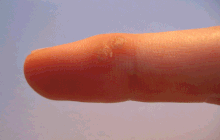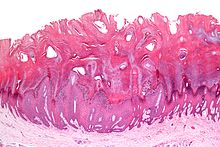Warts are quite common occurrences, but we should understand them as thoroughly as possible. This will help us deal with the situation in case they crop up at any time.

In fact, several other issues might be more painful and serious for the feet than for any other part of the body. This is especially true if one is an athlete. In any case, we should be aware of this potential cure for toenail fungus.
The most usual locations for warts are on the feet and hands, though they can appear on other parts of the body. They might appear one by one, or in groups of more. Warts aren’t cancerous, but they are a disturbing phenomenon.
Causes of Warts
Warts are usually the result of an HPV or human papillomavirus infection. One might risk such infection due to several reasons, including the following:
- Eczema, a common skin condition
- Working with and handling raw meat
- Using public showers without the proper precautions
- A weakened immune system
The virus usually gets through in any place where the skin is punctured or otherwise damaged, even slightly. Some might perpetuate the myth that touching or handling toads cause warts, but that’s not true. Although toads might have some wart-like growth on their back, they don’t transfer those to humans.
Types of Warts
There are several types of warts, with the differences also determining how and if they are transferred to other people. For instance, genital warts can be sexually transmitted to one’s partner. The main types include:
- Common Wart: The common wart is raised, with a rough surface, and is most likely to occur on our hands. However, they can occur just about anywhere on our bodies. These are also known as Junior or Palmer warts.
- Flat Wart: Also known as verruca plana, this wart is small, smooth, and flat in appearance. It’s also usually flesh-colored and can occur I clusters. It’s most common in areas like the knees, face, wrists, neck, wrists, and hands.
- Filiform or Digitate Wart: This resembles a thread of finger in appearance and is usually on the face. The most common areas are the lips or the eyes.
- Genital Wart: Also known as verruca acuminate or a venereal wart. As the name suggests, this occurs on the genital areas.
- Periungual Wart: This comes in the form of clusters, most likely around our nails. The clusters have a cauliflower-like appearance.
- Plantar Wart: This usually take the form of a hard lump, which is sometimes also painful. there would often be several black specks in the middle of such warts. These warts usually only occur on certain pressure points underneath the feet. Their appearance might cause some concern, so read up on whether plantar warts are contagious.
- Mosaic Wart: This comes in a group of clustered warts, which are individually plantar warts. The most commonly affect areas are the hands and feet.
The Importance of Treatment
If we do notice a wart on our body, it’s best to seek treatment as soon as possible. However, most warts usually resolve themselves in a matter of months or even years if we don’t treat them at all. Most people usually want to eliminate warts quickly due to them being painful or unsightly. Some experts state that we should treat warts as soon as we see them. If we don’t, they might spread to other parts of our body.
Usually, if the person with the wart has no other serious health issues, especially conditions like diabetes, warts don’t really pose much of a problem. However, genital warts need a bit more treatment and are a more disturbing issue than other kinds. Here are some over the counter options for wart removal.
Types of Treatment
Some several treatments and procedures can come in handy when we want to dry up warts, remove them, or cause them to fall off on their own. These include the following:
- Topical Treatments: The usually contain salicylic acid, as this compound has been found to be quite effective in wart removal.
- Cryotherapy: This involved the use of liquid nitrogen to freeze up the wart and cause it to fall off. However, the trials involving this method are considerably less than those using salicylic acid.
- Imiquimod: This is a topical cream that can enhance the body’s immune system in fighting the wart-causing virus. It’s been approved by the FDA for use on genital warts.
- Cantharidin: This is a naturally-occurring component that’s found on certain beetles. One can use it on its own or when in a compound with podophyllin. This method is not approved by the FDA< but we can consult compounding pharmacies or order it from a different country if required.
- Dinitrochlorobenzene: Also known as DNCB, this is similar to salicylic acid and is applied right onto the wart itself. The drug is used to induce an immune response, causing inflammation that does away with the wart virus.
- Cidofovir: This is an antiviral drug that we inject right into any HPV lesions. It’s mostly an experimental treatment at this point.
- Benzoyl peroxide or BPO: This is usually considered effective for treating flat warts.
- Silver Nitrate: This comes in the shape of a caustic pencil, which we can find in many drugstores. Trials have shown that it can clear up and improve the appearance of warts in a matter of days.
Conclusion
While there are several treatment methods and procedures for wart removal, we should know our options before deciding on any one way. Our regular doctor should also be involved in this decision, as certain other health issues could trigger unwanted reactions from certain methods.





